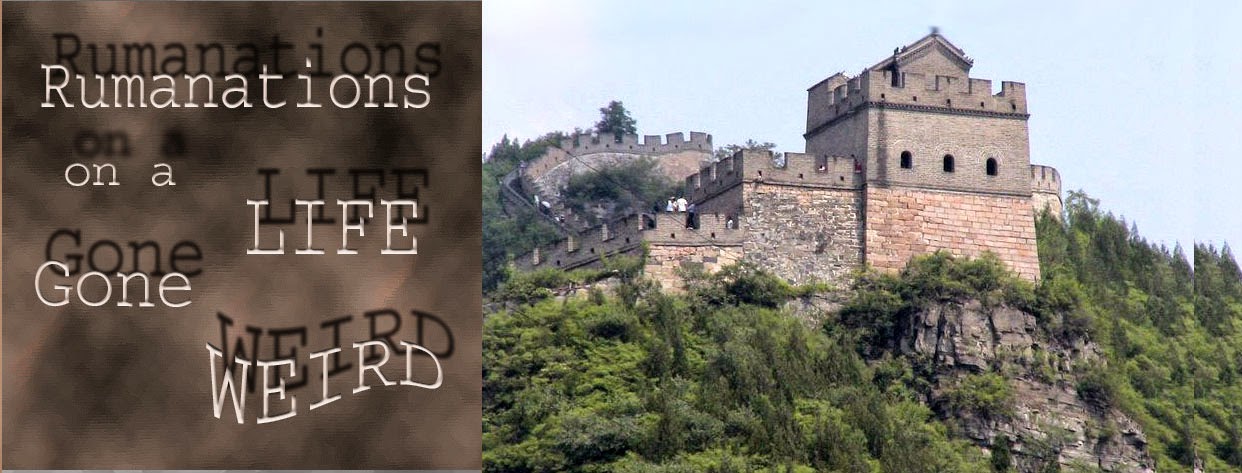When I was little, there was this flamboyant lady who worked the counter at a small mom and pop department store in Bartow, Florida. Each and every time my mother dragged me, pouted lip and grunting, into this store it was because either I needed new school or church clothes or because I lost my winter jacket...again. Somehow this lady, who always seemed to be beaming a broad smile, had an uncanny way of soothing the rebellious beast deep within me. She didn't give me candies. She didn't shake her head in a tsk tsk fashion. She was never condescending. Her kindness was almost other-worldly. No matter what was going on in her life outside her job, she never allowed any disappointment or anger show in her face or her mannerisms. In fact, even when she was sick with the virus-du-jour, she was charming, delicate and collected.
As I grew into a young woman, I began to look forward to seeing her. If she happened to be on break when I stopped in to her department, I gladly waited for her to clock back in. Just the wonderful and colorful conversations were worth the wait. In a way, she became a part of my life. This considerate and sublimely kind woman was there for every milestone I passed. My mother and she wrangled me into a painfully white and frilly communion dress. She was a member of the, "OMG, I have to find a Prom Dress" posse. And finally, when my mother died, she stepped in to help me find the perfect dress for my mom to be laid to rest in. Eventually, after time and circumstances had become to much for her, she retired. I corresponded with her until her timely death at age 82.
I thought about her today. Her bright red ruby lips that lined the smile that made everything alright. The kohl black eyeliner so meticulously drawn around the upper lid of her eyes. Her delicate hands that gently sewed hems perfectly perfect. When I close my eyes I can still see every nuance of her face. Seeing her in my mind's eye brings me comfort. Somehow, her visage soothes and strengthens me. I hope I never forget her.
At least once in a lifetime we meet that certain someone who impacts our life in a positive way. A stranger perhaps, who doesn't have to be kind or influential in our lives, but is. That unexplained karmic act that solidifies our hope in humanity. And maybe, we are positively influential on someone else's life and never know it.
Be good to others. Allow others to be good to you. Do not allow those who are caustic, negative or unkind influence you. Surround yourself with good people. Life is too short to worry about what mean people think or do. And understand that you may be increasingly special to another person and never even know it. I don't think that nice, positive, beautiful lady ever knew what she meant to me. I may have been just another customer. But what does that matter? The goodness she bestowed on me is priceless, whether she ever knew it or not.
As I grew into a young woman, I began to look forward to seeing her. If she happened to be on break when I stopped in to her department, I gladly waited for her to clock back in. Just the wonderful and colorful conversations were worth the wait. In a way, she became a part of my life. This considerate and sublimely kind woman was there for every milestone I passed. My mother and she wrangled me into a painfully white and frilly communion dress. She was a member of the, "OMG, I have to find a Prom Dress" posse. And finally, when my mother died, she stepped in to help me find the perfect dress for my mom to be laid to rest in. Eventually, after time and circumstances had become to much for her, she retired. I corresponded with her until her timely death at age 82.
I thought about her today. Her bright red ruby lips that lined the smile that made everything alright. The kohl black eyeliner so meticulously drawn around the upper lid of her eyes. Her delicate hands that gently sewed hems perfectly perfect. When I close my eyes I can still see every nuance of her face. Seeing her in my mind's eye brings me comfort. Somehow, her visage soothes and strengthens me. I hope I never forget her.
At least once in a lifetime we meet that certain someone who impacts our life in a positive way. A stranger perhaps, who doesn't have to be kind or influential in our lives, but is. That unexplained karmic act that solidifies our hope in humanity. And maybe, we are positively influential on someone else's life and never know it.
Be good to others. Allow others to be good to you. Do not allow those who are caustic, negative or unkind influence you. Surround yourself with good people. Life is too short to worry about what mean people think or do. And understand that you may be increasingly special to another person and never even know it. I don't think that nice, positive, beautiful lady ever knew what she meant to me. I may have been just another customer. But what does that matter? The goodness she bestowed on me is priceless, whether she ever knew it or not.



